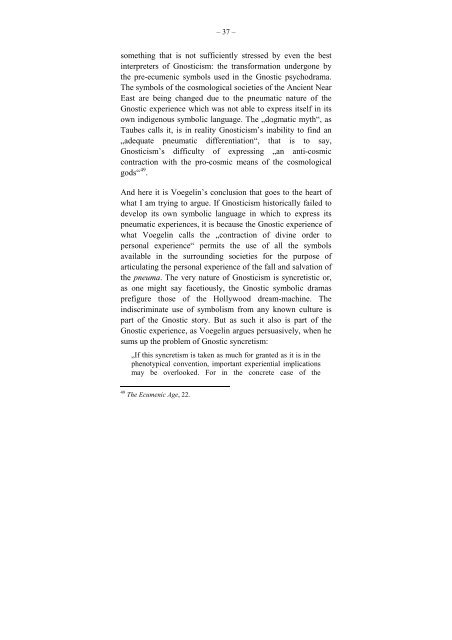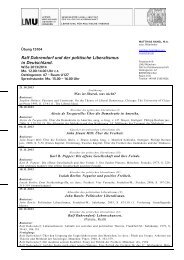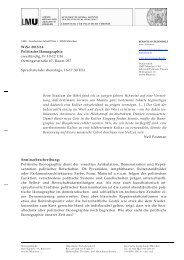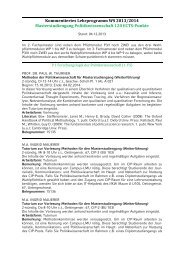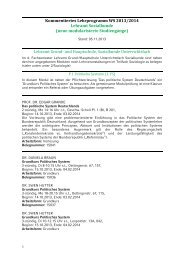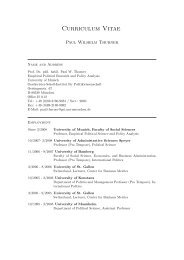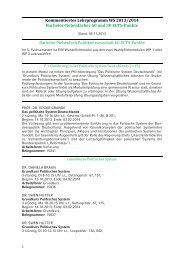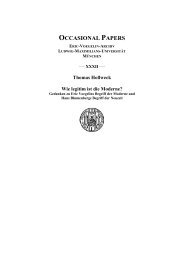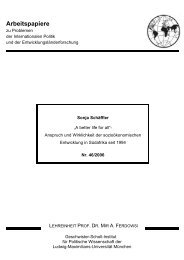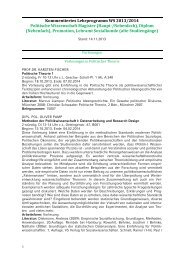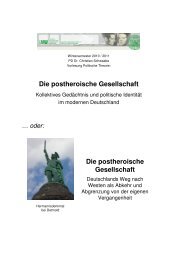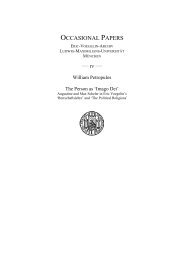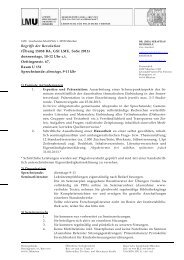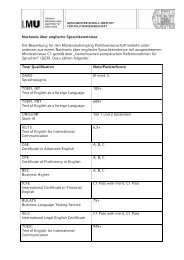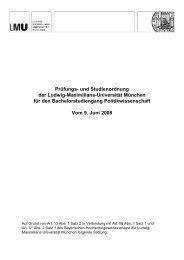THOMAS HOLLWECK is Associate Professor of German at
THOMAS HOLLWECK is Associate Professor of German at
THOMAS HOLLWECK is Associate Professor of German at
You also want an ePaper? Increase the reach of your titles
YUMPU automatically turns print PDFs into web optimized ePapers that Google loves.
– 37 –<br />
something th<strong>at</strong> <strong>is</strong> not sufficiently stressed by even the best<br />
interpreters <strong>of</strong> Gnostic<strong>is</strong>m: the transform<strong>at</strong>ion undergone by<br />
the pre-ecumenic symbols used in the Gnostic psychodrama.<br />
The symbols <strong>of</strong> the cosmological societies <strong>of</strong> the Ancient Near<br />
East are being changed due to the pneum<strong>at</strong>ic n<strong>at</strong>ure <strong>of</strong> the<br />
Gnostic experience which was not able to express itself in its<br />
own indigenous symbolic language. The „dogm<strong>at</strong>ic myth“, as<br />
Taubes calls it, <strong>is</strong> in reality Gnostic<strong>is</strong>m’s inability to find an<br />
„adequ<strong>at</strong>e pneum<strong>at</strong>ic differenti<strong>at</strong>ion“, th<strong>at</strong> <strong>is</strong> to say,<br />
Gnostic<strong>is</strong>m’s difficulty <strong>of</strong> expressing „an anti-cosmic<br />
contraction with the pro-cosmic means <strong>of</strong> the cosmological<br />
gods“ 49 .<br />
And here it <strong>is</strong> Voegelin’s conclusion th<strong>at</strong> goes to the heart <strong>of</strong><br />
wh<strong>at</strong> I am trying to argue. If Gnostic<strong>is</strong>m h<strong>is</strong>torically failed to<br />
develop its own symbolic language in which to express its<br />
pneum<strong>at</strong>ic experiences, it <strong>is</strong> because the Gnostic experience <strong>of</strong><br />
wh<strong>at</strong> Voegelin calls the „contraction <strong>of</strong> divine order to<br />
personal experience“ permits the use <strong>of</strong> all the symbols<br />
available in the surrounding societies for the purpose <strong>of</strong><br />
articul<strong>at</strong>ing the personal experience <strong>of</strong> the fall and salv<strong>at</strong>ion <strong>of</strong><br />
the pneuma. The very n<strong>at</strong>ure <strong>of</strong> Gnostic<strong>is</strong>m <strong>is</strong> syncret<strong>is</strong>tic or,<br />
as one might say facetiously, the Gnostic symbolic dramas<br />
prefigure those <strong>of</strong> the Hollywood dream-machine. The<br />
ind<strong>is</strong>crimin<strong>at</strong>e use <strong>of</strong> symbol<strong>is</strong>m from any known culture <strong>is</strong><br />
part <strong>of</strong> the Gnostic story. But as such it also <strong>is</strong> part <strong>of</strong> the<br />
Gnostic experience, as Voegelin argues persuasively, when he<br />
sums up the problem <strong>of</strong> Gnostic syncret<strong>is</strong>m:<br />
„If th<strong>is</strong> syncret<strong>is</strong>m <strong>is</strong> taken as much for granted as it <strong>is</strong> in the<br />
phenotypical convention, important experiential implic<strong>at</strong>ions<br />
may be overlooked. For in the concrete case <strong>of</strong> the<br />
49 The Ecumenic Age, 22.


